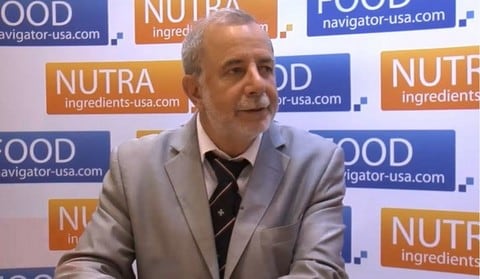Speaking to FoodNavigator-USA, hydrocolloids expert Dennis Seisun from San Diego-based IMR International said that the hydrocolloids sector is doing very little when it comes to communicating about the ingredients with consumers. “It is harder to reverse a negative image than to create a positive one,” said Seisun. IMR publishes the Quarterly Review of Hydrocolloids and hosts an annual Food Hydrocolloid Conference.
“One of the failures of the sector is the focus on technical issues and not on the importance of consumer perceptions,” he said. “The industry isn’t doing enough in a concerted effort. The industry is reactive and not proactive. Look at pectin – it’s the darling of the hydrocolloids space and now would be a perfect time to communicate about this.”
Challenges and opportunities in the market
Hydrocolloids are long-chain polysaccharides and proteins that are used extensively in food formulation, mostly as thickening and gelling agents. The global market for hydrocolloids is about $7.3 bn for food and beverage, said Seisun, and when you add in industrial and oil field usage, and the market exceeds $21 bn.
While the overall market continues to grow, some specific hydrocolloids are experiencing difficult times. Carrageenan has experienced significant negative pressure in the US because of the negative publicity around it by people like the Food Babe and the Cornucopia Institute. Interestingly, a citizen’s petition to remove carrageenan was denied by the FDA, and the agency has continued and maintained approval of carrageenan in baby food, which is one of the most sensitive and closely monitored categories there is, noted Seisun.
A study published recently in the peer-reviewed journal Food and Chemical Toxicology [Oct 2016, Vol 96, pp. 1-10] concluded that carrageenan consumed in food does not cause intestinal inflammation, does not cross the intestinal epithelium and is not toxic to cells. Despite such reports, many food and beverage manufacturers have switched out formulating with carrageenan, with gellan gum a big winner.
Xanthan gum is another ingredient that has experienced some challenges in the market, which Seisun attributes to the fact that the ingredient “starts with an x”. “I’ve even seen labels claiming ‘no xanthan’ as a positive,” he added.
On the supply side, there has been a tightening around locust bean gum, which has seen the price significantly increase [for example, DuPont recently announced price increases]. Seisun expects this to continue until the next harvest in 2018.
On the flip side, pectin remains top of the positive list, said Seisun, followed by the starches, while consumer sentiment around gelatin is neutral. “It has a great following as a source of protein in protein beverages but it’s an animal product,” he noted.
Innovation

Seisun said that hydrocolloids are not commodities, but notes that innovation within the sector is minor, being mostly incremental product line extensions and differentiation.
While chemical modification of a hydrocolloid results in costly regulatory compliance procedures, physical and enzymatic modification can occur and the product can still be labeled the same. An example of this is Ingredion’s Novation range of functional and native starches that are produced by a process that is not chemical, he said.
There is also some innovation around sourcing, albeit limited and specific to the hydrocolloid in question (because hydrocolloid raw materials are of "natural" origin – seaweed, seeds, citrus peel, and so on – the production and price of hydrocolloids are cyclic and hard to predict, he noted). However, there have been some advances in the pectin space regarding using orange peel or coffee waste as a source of pectin (albeit with different characteristic and functionality to pectin from lemons, limes or apple pomace). “Work using pectin from orange could alleviate raw material supply issues,” said Seisun.
Alternative supply might also come from synthetic biology or fermentation techniques. San Francisco-based Geltor (formerly Gelzen) has received millions of dollars in funding to develop gelatin from microbes via a fermentation process.
One final area of innovation concerns the physiological function of hydrocolloids, many of which are either soluble or insoluble fibers. “The nutritional and nutraceutical benefits of hydrocolloids have only just begun to be discovered. They can do much more than simply viscosify, gel and suspend. Much has yet to be learned and understood,” said Seisun.

